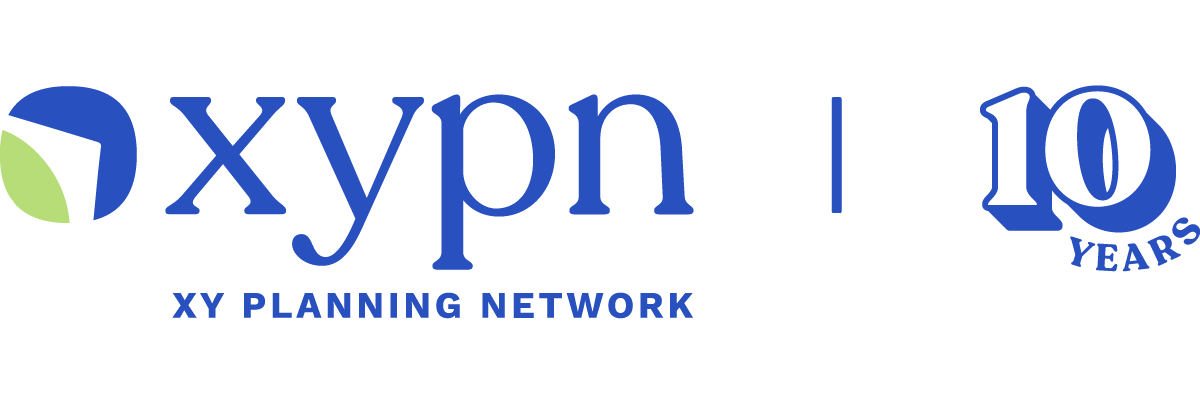Email 101 for Firm Owners: How to Write an Email People Will Actually Read
Share this
With over half of the world’s population using email today, incorporating email into your marketing strategy isn’t really an option—it’s a necessity.
In 2019, it’s projected there will be an average of 293.6 billion emails sent daily. As for the average office worker, they alone receive 121 emails a day. That means just sending an email isn’t enough. You have to send a carefully crafted email that people will actually open and read.
Email is an oversaturated medium, but if you do it right, your current and prospective clients will actually be excited, not annoyed, to get your emails.
If you want to learn how to create emails that inspire people to hit “open” instead of “delete”, read on.
Lead with a Subject Line and Preview Text that Pique Interest
Your subject line and preview text are like a first impression, which means you only have one shot to get it right.
Whether you’re contacting a current or prospective client, you should aim to pique the interest of your audience with a subject line compelling enough to inspire them to open the email to read more.
Your email will compete with at least a few dozen (if not 100+) others, so make sure your subject line stands out.
How exactly do you do that? Check out these tactics from HubSpot, XYPN's marketing platform of choice, which include use of urgency, curiosity, offers, personalization, and name recognition to inspire the most opens.
HubSpot also recommends using 50 characters or less when writing your subject line. When it comes to email messaging, brevity is your friend. For the sake of your subject line, shorter also formats better in an inbox. Many email providers will cut off text after 50 characters, so your super witty 80-character subject line will likely fall flat, no matter how genius it is.
Everyone knows what a subject line is, but many are left scratching their heads over preview text. What’s the point? Is it really necessary?
Preview text is that little message you see next to your subject line in your inbox. For Gmail users, preview text is unformatted whereas subject lines are bold.
Preview text can help further intrigue your reader by providing more detail than the subject line can on its own. As is the case with subject lines, less is more here. Preview text should be between 35-90 characters to avoid the dreaded cut-off.
Remember that super witty 80-character subject line I mentioned above? Split it into two parts—your subject line and your preview text—to pack the same punch while staying within character limits.
Don’t Be a Bore
Now that you have your reader's interest, don’t leave them hanging. If you took the time to craft the perfect subject line and preview text, you can rest assured all that hard work will go to waste if you don’t follow through with email copy that’s actually helpful to your reader.
Have you ever been super excited to open an email only to find it’s not at all what you were expecting? Misleading emails are THE WORST (cue relevant subject line and preview text).
Have you ever opened an email to be met with block after block of text staring you in the face, just begging you to let out a yawn?
Boring emails are the second worst (cue compelling copy).
When you send an email to a current or prospective client, the last thing you want them to think is, “Why did I get this?” Your emails should excite your recipients, not put them to sleep.
There are a number of ways you can be the life of the inbox party:
- While staying on brand, use a tone that relates to your audience. Is your niche clientele primarily surf shop owners on the west coast? Then you better be speaking their language and using a tone that will appeal to them, dude (I kid). The tone you’d use for surf shop owners probably won’t fly if your audience is mainly comprised of tax lawyers. The bottom line? Always know your audience and speak their language.
- You know what they say: a picture is worth a thousand words. An email is so much more than text. Use relevant images and embed videos that help convey your main message.
- Make sure the message you’re sending is worth being communicated. Ask yourself, “How important is it for my client or prospect to know this?” By sending your clients and prospects the most relevant messages, you’re training them to always open your emails. Oversaturating their inboxes with emails will turn them off from your communications, even the most important ones. Consider the fable of the little boy who cried wolf. Don’t cry wolf by emailing a message that perhaps would have been better communicated on your social channels.
(There is, of course, a time and a place for “boring” emails—those that communicate technical, important, potentially sensitive information. Your tone will vary depending on the message you’re communicating.)
Respect Your Reader's Time
As a firm owner, you know just how valuable time is. Do you have loads of extra time to read every email you receive in-depth? No.
Your audience doesn’t either.
Your emails shouldn’t read like a Charles Dickens novel. They should be skimmable and easy to digest. Use bullet points to transform long blocks of text into readable lists, bold keywords or phrases for emphasis, break up text with headers and sections, and write in a clear and concise manner.
Avoid using fluffy or filler words. XYPN’s webmaster, Katie DeMars, recently wrote a blog on how to write effectively for the digital world. In her article, she recommends these five tips to cut the clutter out of your messaging:
- Get to the point
- Use relevant graphics
- Use bullets and tables
- Remove filler words
- Edit. Edit again. Edit some more.
These tips will help keep your email message skimmable, making it easy for your reader to quickly understand the point of the email and (hopefully) take the desired action.
Your clients and prospects will thank you knowing they won’t be bogged down with hard-to-decipher information every time they open your emails. (Don’t expect a verbal thank you but do expect higher open rates!)
Communicate Your Message with a Logical Layout
Now that we’ve covered email copy, let’s talk about layout. My biggest tip: be intentional with how you set up your template(s).
One of the first lessons they teach journalism students is the inverted pyramid metaphor, whereby the most important information is placed at the top of the message followed by information of lesser importance, and so on.
Simply put: don’t bury the lead.
If you subscribe to any XYPN emails, you’ll notice that not only do we get right to the point within the first one to two sentences, we also strategically organize the content and images in an aesthetically pleasing way.
We use columns to organize sections, icons so our readers know what content to expect where, and we always, always put the most important information at the top of the email.
Follow suit and take the guesswork out of your emails by creating a layout that is logical and helps readers easily consume your content.
Personalize Your Emails
My favorite example of customization within an email is the monthly home report I receive from Google Nest ("Nest"), a company that makes smart devices for your home.
I have two Nest thermostats, and every month I receive an email from Nest that I always open and always read. Why? Because they’re awesome.
Nest takes email customization to a new level. It’s almost like Nest has little elves writing their email communications to each individual customer. (To clarify, they don’t—they just have really strong data and make good use of it through personalization tokens.)
Here’s what Nest does right with personalization:
- Subject line: Nest May Home Report for <My Street Name>
- Main body: a month-over-month comparison of how much energy was used by my house
- Badges earned: Nest gamifies energy saving by awarding me “leafs” and telling me how I compare to other Nest users in my area (who doesn’t love a little healthy competition?)
- Video of the month: Consumers submit videos of themselves using Nest's products; Nest includes the top video in their emails
While you don’t want to personalize your emails to the point of being invasive or “creepy”, a little customization will go a long way towards connecting with your current and prospective clients.
Personalization helps readers feel special (and who doesn’t love that?). Companies like Nest leverage extremely sophisticated data to compose their personalized emails, but fear not, you don’t need to be on their level to tailor emails to your audience. Most basic email automation tools offer personalization features, so take advantage of them and start customizing!
Another simple way to customize your emails and increase open rates is to use a legitimate sender name and address. An email from “Whitney Mitchell, XYPN Marketeer” with the email address “whitney@xyplanningnetwork.com” is more likely to earn higher open and click through rates than an email from “support” with the email address “support@xyplanningnetwork.com.” People like doing business with people, not bots.
Sure, there’s a science behind email marketing, but it’s not rocket science. Using the simple tips above, you can simplify your email strategy and create killer emails your clients and prospects are sure to not only open, but enjoy.

About the Author
As XYPN’s Email Marketing Specialist, Whitney Mitchell is responsible for communicating some of XYPN's most important messages. With a background in member organizations, she has developed a passion for using key metrics to communicate the right message to the right audience at the right time. No click bait here! Whitney knows it takes more than a compelling subject line to engage the XYPN audience and always strives to deliver valuable content directly to people's inboxes.
Share this
- Advisor Posts (433)
- Fee-only advisor (388)
- Advice (316)
- Business Development (245)
- Independent Financial Advisor (204)
- Growing Your Firm (160)
- Marketing (132)
- Financial Planning (104)
- What Would Arlene Say (WWAS) (81)
- Firm Ownership (78)
- Business Coach (77)
- Training (76)
- Compliance (71)
- Business (69)
- Building Your Firm (68)
- Financial Advisors (65)
- Online Marketing (61)
- Events (60)
- Starting a Firm (50)
- From XYPN Members (48)
- Technology (48)
- Launching a firm (45)
- Advisors (42)
- Entrepreneurship (39)
- Taxes (39)
- Staffing & HR (38)
- Networking & Community (33)
- Interviews and Case Studies (32)
- Investment Management (32)
- XYPN Invest (28)
- Tax Preparation (27)
- Business Owner (25)
- Social Responsibility (25)
- Sales (24)
- Small Business Owner (20)
- Industry Trends & Insights (19)
- From XYPN Invest (18)
- Financial Planners (17)
- Independent Financial Planner (17)
- XYPN (17)
- Leadership & Vision (16)
- XYPN News (16)
- Tech Stack (15)
- How to be a Financial Advisor (14)
- RIA (14)
- Investing (13)
- Media (13)
- NextGen (13)
- Press Mentions (13)
- Financial Education (12)
- Goals (12)
- RIA Owner (12)
- XYPN Membership (12)
- Assets Under Management (AUM) (11)
- First Year (11)
- Niche (11)
- SEC (10)
- Advisor Success (9)
- RIA Registration (9)
- Communication (8)
- Lessons (8)
- Study Group (8)
- Time Management (8)
- Virtual Advisor (8)
- Growth (7)
- Mental Health (7)
- Pricing Models (7)
- From Our Advisors (6)
- Independent RIA (6)
- Money Management (6)
- Motivation (6)
- Preparing to Launch (6)
- Processes (6)
- Risk and Investing (6)
- Automation (5)
- Behavioral Finance (5)
- Broker-Dealers (5)
- College Planning (5)
- Filing Status (5)
- How I Did It series (5)
- Investment Planner (5)
- Michael Kitces (5)
- Preparing to Launch (5)
- Retirement (5)
- S Corpration (5)
- Scaling (5)
- Support System (5)
- TAMP (5)
- Wealth (5)
- Year-End (5)
- Bear Market (4)
- CFP Certification (4)
- Outsourcing (4)
- Selling a Firm (4)
- Small Business (4)
- State Registration (4)
- Succession Plans (4)
- Benchmarking Study (3)
- Bookkeeping (3)
- Budgeting (3)
- ESG Investing (3)
- Emotional Decisions (3)
- Engagement (3)
- Fiduciary (3)
- Financial Life Planning (3)
- Getting Leads (3)
- IRA (3)
- Life planning (3)
- Lifestyle practice (3)
- Membership (3)
- Millennials (3)
- Monthly Retainer Model (3)
- Monthly Subscription Model (3)
- Partnership (3)
- Pricing (3)
- RIA Audit (3)
- Recordkeeping (3)
- Risk Assessment (3)
- Staying Relevant (3)
- Wellness (3)
- Work Life Balance (3)
- Advice-Only Planning (2)
- Building Your Firm (2)
- Career Changers (2)
- Charitable Donations (2)
- Community Property (2)
- Design (2)
- Differentiation (2)
- Exchange-Traded Funds (ETF) (2)
- FINRA (2)
- Finding Your Why (2)
- Graphic design (2)
- Growing Income (2)
- Health Care (2)
- Inflation (2)
- Key performance indicator (KPI) (2)
- Keynote (2)
- Negative Rates (2)
- Operations (2)
- Organization (2)
- Outsourced Asset Management (2)
- Outsourced Bookkeeping (2)
- Portfolio Management (2)
- Productivity (2)
- Psychology (2)
- Quickbooks (2)
- Recommended Reading (2)
- Recruiting (2)
- Registered Representative (2)
- Registration (2)
- Restricted Stock Units (RSU) (2)
- Start Ups (2)
- Stock Options (2)
- Team Communication (2)
- Virtual Assistant (2)
- Virtual Paraplanner (2)
- Accounting (1)
- Arlene Moss (1)
- Assistant (1)
- Bonds (1)
- Bull Market (1)
- Careers (1)
- Certified Public Accountant (CPA) (1)
- Childcare (1)
- Client Acquisition (1)
- Client Services (1)
- Common Financial Mistakes (1)
- Consulting (1)
- Consumerism (1)
- Credit (1)
- Custodians (1)
- Custody Rule (1)
- Data (1)
- Daycare (1)
- Definitions (1)
- Designations (1)
- Direct Indexing (1)
- Disasters (1)
- Earn More (1)
- Family (1)
- Fidelity (1)
- Finance (1)
- Financial Freedom (1)
- Financial Goals (1)
- Financial Life Management (1)
- Financial Success (1)
- Financial Wellness (1)
- Form 8606 (1)
- Form 8915-E (1)
- Grief (1)
- Guide (1)
- How to Budget (1)
- Impostor Syndrome (1)
- Interns (1)
- Investor Policy Statement (IPS) (1)
- Job burnout (1)
- Liquidating your business (1)
- Loans (1)
- Moving Forward (1)
- Part Time (1)
- Paying Yourself (1)
- Paystub (1)
- Perfectionism (1)
- Project Management (1)
- Projecting Returns (1)
- Purpose (1)
- Quarterly Estimated Payments (1)
- RIA Operations (1)
- Recession (1)
- Referrals (1)
- Regulations (1)
- Regulators (1)
- Reinvention (1)
- Relationships (1)
- Remote (1)
- Required Minimum Distributions (RMD) (1)
- Risk Management (1)
- Roth Conversations (1)
- Roth IRA (1)
- Sabbatical (1)
- Spending (1)
- Strategy (1)
- Systems (1)
- Target Audience (1)
- Teamwork (1)
- Terms (1)
- To-Do List (1)
- Traditional IRA (1)
- Transitions (1)
- Virtual (1)
- Vulnerability (1)
- XYPN Books (1)
Subscribe by email
You May Also Like
These Related Stories

Why Are My Firm’s Marketing Emails Being Flagged as Spam?

6 Hacks to Refresh Your Firm's Email Marketing Strategy



